Asp.Net Core Identity 多資料庫支援
Asp.Net Core Identity 是.Net自帶的身份認證系統,支援使用者介面 (UI) 登入功能,並且管理使用者、密碼、組態檔資料、角色、宣告、令牌、電子郵件確認等等。使用Visual Studio建立帶有identity的專案時,使用SqlServer作為預設的資料庫,本文介紹如何改造為多種資料庫支援。
首先,使用Visual Studio 2022建立一個新的Asp.Net Core Web專案,名稱為TestIdentity,選擇身份認證型別為個人賬戶:
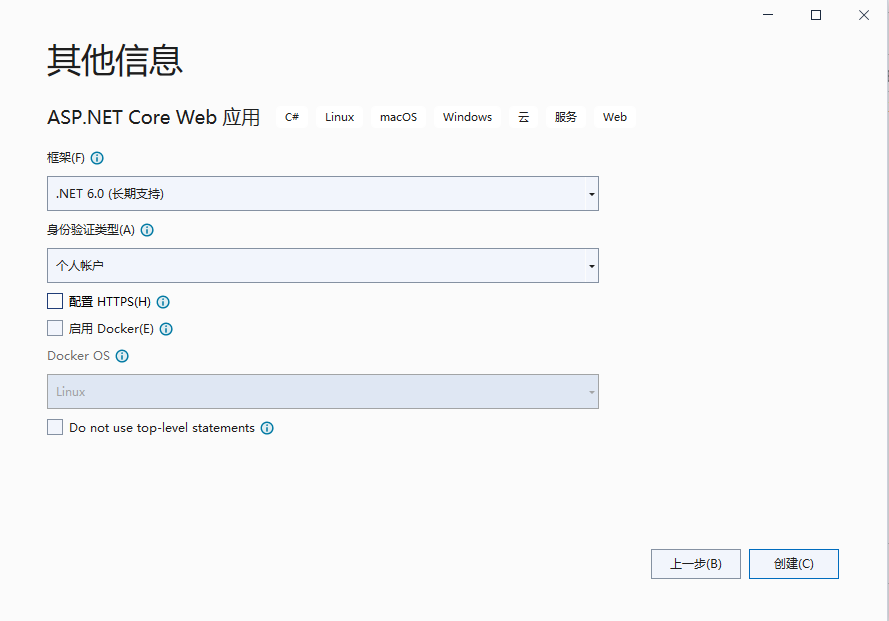
建立的專案結構如下:
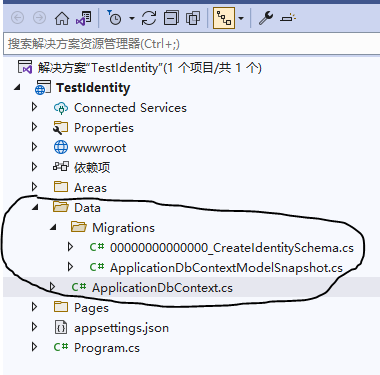
在Data目錄下儲存的是身份認證的DbContext,名稱為ApplicationDbContext,還有基於SqlServer的遷移檔案。我們所要做的第一件事情是將SqlServer部分移動到另一個專案中,然後再增加對其它資料庫型別的支援。
現在我們在解決方案中建立一個新的類庫專案,名稱為IdentityEF,在這個專案中安裝包Microsoft.AspNetCore.Identity.EntityFrameworkCore。然後將ApplicationDbContext移動到這個專案中。

然後我們再建立另一個類庫專案,負責SqlServer資料庫的遷移,名稱為IdentityEF.SqlServer,在這個專案中安裝包Microsoft.EntityFrameworkCore.SqlServer和Microsoft.EntityFrameworkCore.Tools,還要增加對IdentityEF的專案參照,然後將TestIdentity中Data目錄下的Migrations子目錄移動到這個專案中:
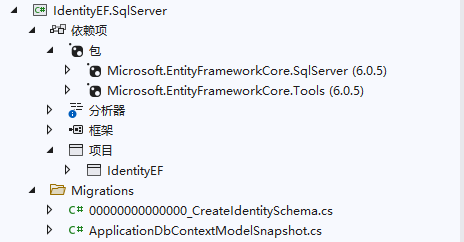
然後在這個專案中增加新的類DbContextFactory,程式碼如下:
using Microsoft.EntityFrameworkCore;
using Microsoft.EntityFrameworkCore.Design;
using System;
using System.Collections.Generic;
using System.Linq;
using System.Text;
using System.Threading.Tasks;
using TestIdentity.Data;
namespace IdentityEF.SqlServer
{
public class DbContextFactory : IDesignTimeDbContextFactory<ApplicationDbContext>
{
public ApplicationDbContext CreateDbContext(string[] args)
{
var optionsBuilder = new DbContextOptionsBuilder<ApplicationDbContext>();
optionsBuilder.UseSqlServer("Server=(localdb)\\mssqllocaldb;Database=aspnet-TestIdentity-53bc9b9d-9d6a-45d4-8429-2a2761773502;Trusted_Connection=True;MultipleActiveResultSets=true",
x => x.MigrationsAssembly("IdentityEF.SqlServer"));
return new ApplicationDbContext(optionsBuilder.Options);
}
}
}
請注意,上面的資料庫名稱與TestIdentity專案中appsettings.json中定義的DefaultConnection是一樣的,這樣,生成的資料庫在TestIdentity中可以直接使用。
{
"ConnectionStrings": {
"DefaultConnection": "Server=(localdb)\\mssqllocaldb;Database=aspnet-TestIdentity-53bc9b9d-9d6a-45d4-8429-2a2761773502;Trusted_Connection=True;MultipleActiveResultSets=true"
},
"Logging": {
"LogLevel": {
"Default": "Information",
"Microsoft.AspNetCore": "Warning"
}
},
"AllowedHosts": "*"
}
再增加一個依賴注入擴充套件IdentityEFExtension,方便在Web應用中的參照:
using Microsoft.EntityFrameworkCore;
using Microsoft.Extensions.Configuration;
using Microsoft.Extensions.DependencyInjection;
using System;
using System.Collections.Generic;
using System.Linq;
using System.Text;
using System.Threading.Tasks;
using TestIdentity.Data;
namespace IdentityEF.SqlServer
{
public static class IdentityEFExtension
{
public static IServiceCollection AddIdentityEFSqlServer(this IServiceCollection services, IConfiguration Configuration)
{
services.AddDbContext<ApplicationDbContext>(options =>
options.UseSqlServer(Configuration.GetConnectionString("DefaultConnection"),
x => x.MigrationsAssembly("IdentityEF.SqlServer")));
return services;
}
}
}
到這裡,改造基本完畢,在Web應TestIdentity專案中,增加對這兩個專案的參照,然後改造Program.cs,將原有的部分註釋掉,增加AddIdentityEFSqlServer:
//// Add services to the container.
//var connectionString = builder.Configuration.GetConnectionString("DefaultConnection");
//builder.Services.AddDbContext<ApplicationDbContext>(options =>
// options.UseSqlServer(connectionString));
//builder.Services.AddDatabaseDeveloperPageExceptionFilter();
builder.Services.AddIdentityEFSqlServer(builder.Configuration);
現在,可以在包管理器中,使用Update-Database建立資料庫。首先,將IdentityEF.SqlServer專案設定為啟動專案,在包管理器中,將預設專案也設定為IdentityEF.SqlServer:
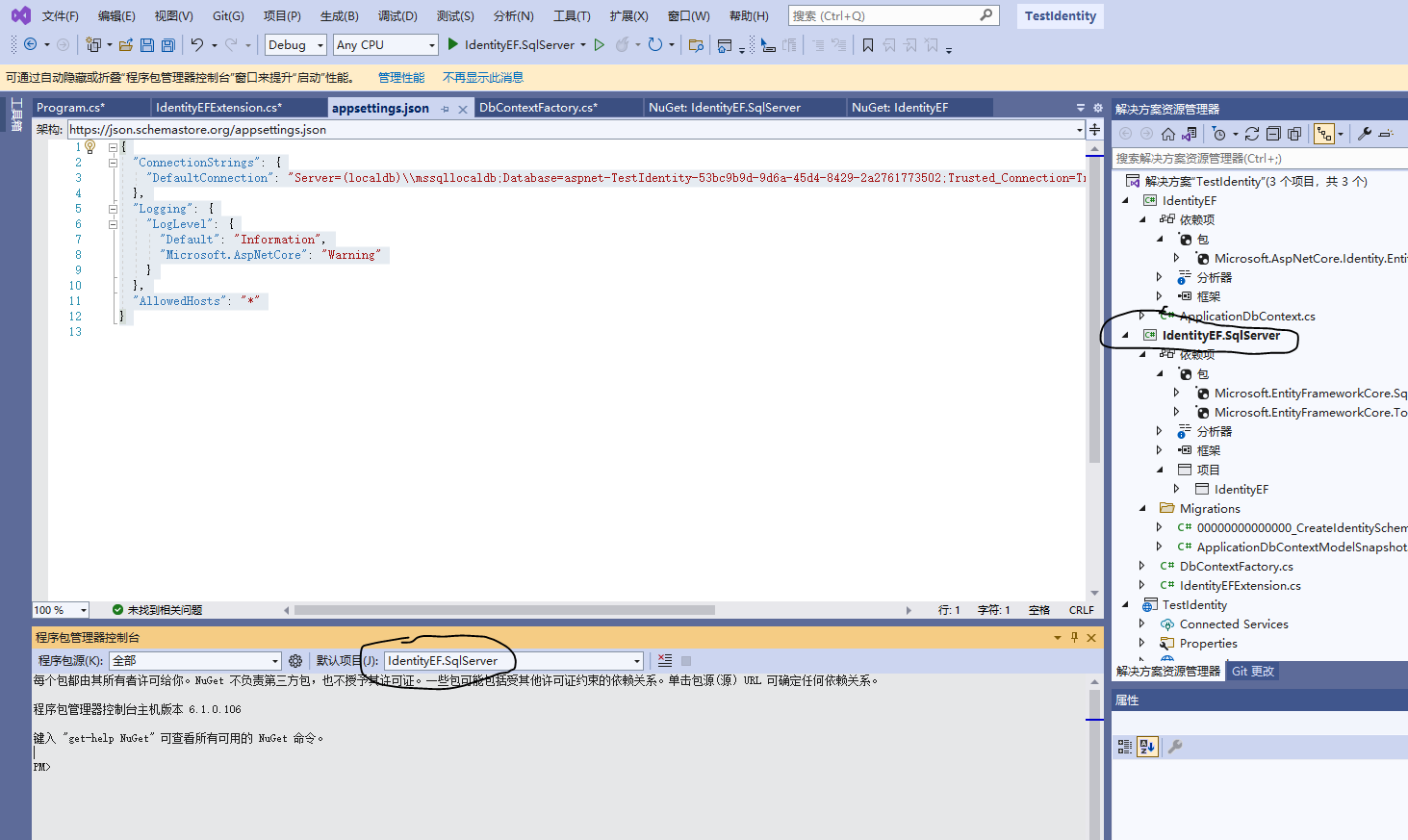
然後執行Update-Database,順利的化,資料庫就生成了。將啟動專案改回到TestIdentity,執行專案,我們可以註冊使用者並進行登入了。到這裡,針對SqlServer的部分已經從Web專案中分離,現在,我們增加對其它資料庫型別的支援,比如,我們增加Sqlite的支援。
建立一個新的類庫,名稱為IdentityEF.Sqlite,增加程式包Microsoft.EntityFrameworkCore.Sqlite和Microsoft.EntityFrameworkCore.Tools,還要增加對IdentityEF的專案參照,然後增加DbContextFactory:
using Microsoft.EntityFrameworkCore;
using Microsoft.EntityFrameworkCore.Design;
using TestIdentityEF.Data;
namespace IdentityEF.Sqlite
{
public class DbContextFactory : IDesignTimeDbContextFactory<ApplicationDbContext>
{
public ApplicationDbContext CreateDbContext(string[] args)
{
var optionsBuilder = new DbContextOptionsBuilder<ApplicationDbContext>();
optionsBuilder.UseSqlite("DataSource=mydatabase.db;",
x => x.MigrationsAssembly("IdentityEF.Sqlite"));
return new ApplicationDbContext(optionsBuilder.Options);
}
}
}
還增加依賴注入擴充套件:
using Microsoft.EntityFrameworkCore;
using Microsoft.Extensions.Configuration;
using Microsoft.Extensions.DependencyInjection;
using System;
using System.Collections.Generic;
using System.Linq;
using System.Text;
using System.Threading.Tasks;
using TestIdentity.Data;
namespace IdentityEF.Sqlite
{
public static class IdentityEFExtension
{
public static IServiceCollection AddIdentityEFSqlite(this IServiceCollection services, IConfiguration Configuration)
{
services.AddDbContext<ApplicationDbContext>(options =>
options.UseSqlite(Configuration.GetConnectionString("IdentityConnection"),
x => x.MigrationsAssembly("IdentityEF.Sqlite")));
return services;
}
}
}
專案的結構如下:

現在,我們需要生成遷移檔案和資料庫。將專案IdentityEF.Sqlite設定為啟動專案,在程式包管理器中,將IdentityEF.Sqlite設定為預設專案:
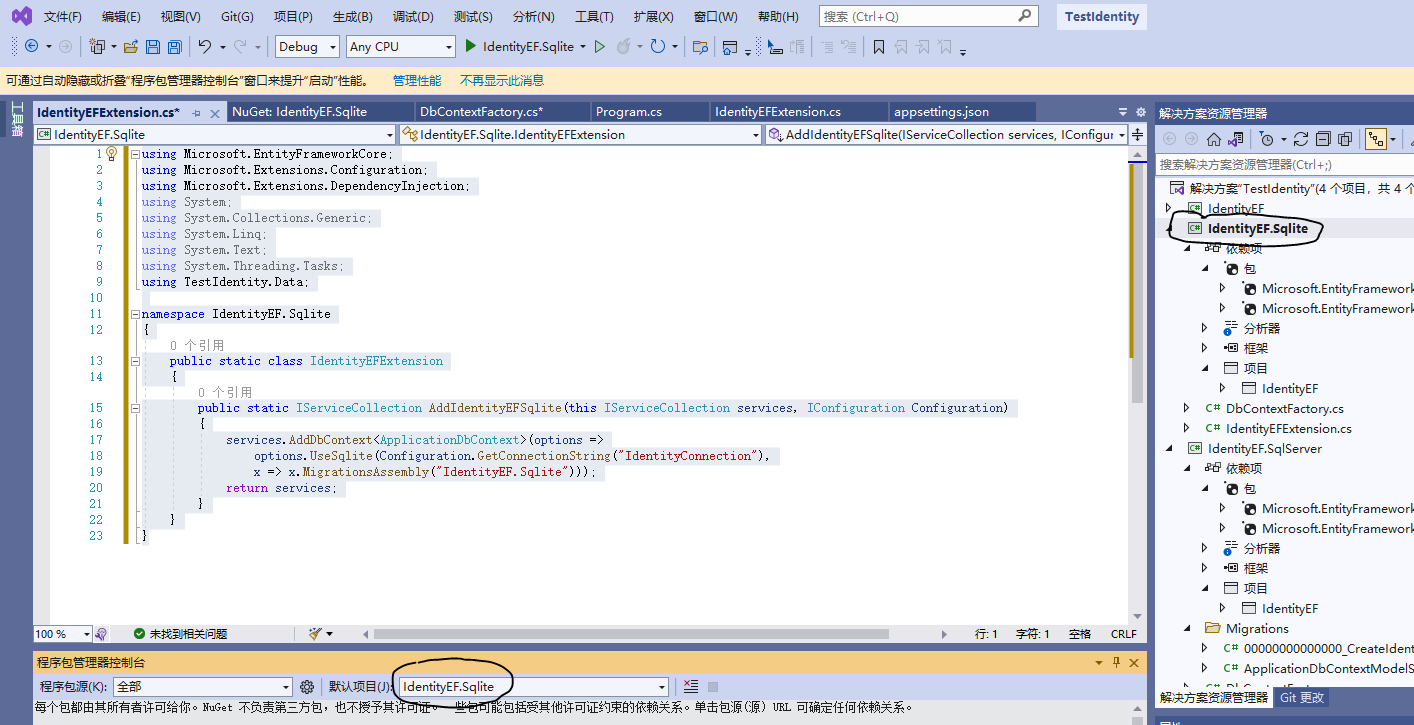
在程式包管理器中執行:
Add-Migration init
如果一切順利,在專案檔案中會增加遷移檔案:
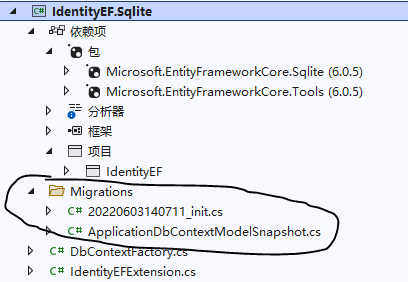
然後執行Update-Database,我們會發現,專案中多了db檔案:
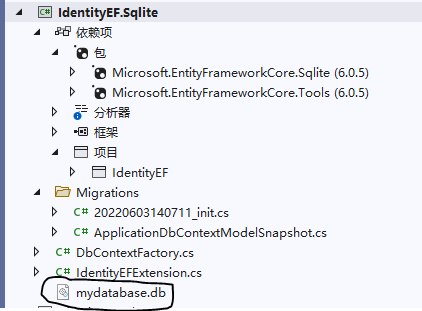
最後,改造一下Web應用,使其支援Sqlite資料庫,並且可以通過組態檔進行切換。在專案中增加對IdentityEF.Sqlite的參照,然後修改Program.cs:
if (builder.Configuration["DbType"]=="SqlServer")
builder.Services.AddIdentityEFSqlServer(builder.Configuration);
else
builder.Services.AddIdentityEFSqlite(builder.Configuration);
在組態檔中使用DbType切換資料庫的型別:
{
"ConnectionStrings": {
//"DefaultConnection": "Server=(localdb)\\mssqllocaldb;Database=aspnet-TestIdentity-53bc9b9d-9d6a-45d4-8429-2a2761773502;Trusted_Connection=True;MultipleActiveResultSets=true",
"DefaultConnection": "DataSource=D:\\Asp.Net Core\\TestIdentityEF\\IdentityEF.Sqlite\\mydatabase.db"
},
"DbType": "Sqlite",
"Logging": {
"LogLevel": {
"Default": "Information",
"Microsoft.AspNetCore": "Warning"
}
},
"AllowedHosts": "*"
}
完整的專案程式碼可以從github下載:https://github.com/zhenl/TestIdentityEF 。
本文來自部落格園,作者:尋找無名的特質,轉載請註明原文連結:https://www.cnblogs.com/zhenl/p/16340890.html